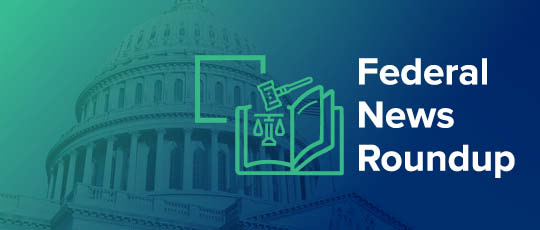For WorldatWork Members
- Modernizing Pharmacy Benefits: A Total Rewards Opportunity, Workspan Daily Plus+ article
- Use This Checklist Toward Modernizing Your Pharmacy Benefits, Workspan Daily Plus+ article
- Health Insurance Selection Checklist for Employees, Workspan Daily Plus+ article
- Pay Today, Save Tomorrow? The Potential ROI for Covering GLP-1s, Workspan Daily Plus+ article
- Benefits Pulse: A Guide to Listening, Learning, and Leveling Up, tool
For Everyone
- Rising Healthcare Costs Forcing Employers to Rewrite Their Game Plan, Workspan Daily article
- A Prescription for Rising Drug Costs, Workspan Daily article
- Workers Want Pharmacy Benefits with Consumer App-Like Ease, Workspan Daily article
- What Does the Data Show on GLP-1 Prescribe Rates, Coverage, Costs? Workspan Daily article
- Employers Showing ‘Growing Appetite for Disruptive’ Benefits Solutions, Workspan Daily article
- Most Employers Hold Firm on Well-Being Offerings — But Want Results, Workspan Daily article
Biologics are likely an unfamiliar class of medications to many Americans, and for good reason — they represent less than 5% of all prescriptions. But their use comes with a disproportionate price tag: They account for about half of the country’s annual medication spend.
Pricey specialty drugs rack up healthcare costs for employers, whose workers are increasingly looking to their employer-sponsored health plan for simplicity and affordability. In the world of biologics, there’s an under-recognized, underutilized player: biosimilars.
Access a bonus Workspan Daily Plus+ article on this subject:
Biologics and Biosimilars: A Breakdown
Biologics — or biological drugs — are complex medications made from living systems such as cells, bacteria or other microorganisms. They’re used to treat a number of chronic conditions, with cancers, diabetes, Crohn’s disease, ulcerative colitis, psoriasis, rheumatoid arthritis and other forms of arthritis, multiple sclerosis, and kidney diseases among the most prominent.
A biosimilar is a medication made in the same way and from the same sources as a biologic approved by the U.S. Food and Drug Administration (FDA). While not identical to the original biologic, biosimilars are clinically equivalent, and generally deemed as safe and effective. And here’s the kicker: they’re generally much less expensive.
“Biosimilars expand medication access to therapies that are just as clinically efficacious and safe, and can reduce specialty drug spend for payers, depending on rebate arrangements,” said Chantell Sell, a director and national pharmacy practice clinical lead at consulting firm WTW. “Low uptake can be a concern, so it’s important to note that if there are more patients using biosimilars, then manufacturers will continue to make them.”
Biosimilars fall into a unique class of cost-saving pharmaceutical solutions. According to Sell, they differ from options such as compounded glucagon-like peptide-1 (GLP-1) medications, which are customized products created by compounding pharmacies that use the same active ingredients as in manufactured GLP-1s but are not FDA approved, and may vary in quality and dosing.
She also noted they’re distinct from generic medications, which are chemically identical to brand-name drugs; rather, biosimilars are biologically similar and achieve the same effects.
While there are more than 30,000 approved generic drugs of all types, exceeding the number of brand-name drugs they can substitute for, there are fewer than 100 approved biosimilars in the U.S. — and in some cases, one biologic has multiple corresponding biosimilars — which means biosimilars are available as an alternative for only a fraction of approved biologics.
“The difference is scale and complexity,” said Savitha Vivian, the senior vice president of industry relations and formulary strategy at pharmacy benefit manager Optum Rx. “Biosimilars are large-molecule drugs, so the manufacturing and regulatory pathways are more involved.”
Low Uptake: Factors Holding Back Biosimilar Use
Although the number of available biosimilars has spiked since the first U.S. approval in 2015, their assimilation into standard clinical care has been slow. There is a number of reasons for the lag, according to risk management and HR consulting firm Aon, including:
- A lack of healthcare professional familiarity, which reduces prescribing;
- Patient discomfort with utilizing alternative options;
- Manufacturer strategies to reduce market competition; and,
- Exclusion from pharmacy benefit manager (PBM) formularies.
Regulatory complexity can play a role as well. If a biosimilar does not have an FDA designation of “interchangeable,” patients can’t elect to switch and pharmacists can’t offer the less expensive alternative without obtaining a new prescription.
“Insurers and PBMs play a pivotal role in formulary placement and utilization management, but their decisions can be influenced by rebate structures that favor brand-name biologics over biosimilars,” said Tracy Spencer, a national pharmacy practice leader in Aon’s U.S. Health Solutions consulting practice. “HR and total rewards professionals have to navigate the complexity of pharmacy benefits and the lack of transparency in PBM contracts, which can make it difficult to advocate for biosimilar inclusion, even when there are cost savings.”
In some cases, PBMs also favor their own private-label biosimilars over other biosimilar options or brand-name biologics, Sell said.
However, the PBM biosimilar landscape is changing, noted Optum Rx’s Vivian. That company’s CEO, Patrick Conway, testified to Congress in 2024 in support of reforming the systemic loopholes that allow drug manufacturers to stymie the development of less expensive alternatives such as biosimilars. Vivian referenced Optum Rx’s decision to switch from a leading biologic to a biosimilar in its formularies in 2025, which resulted in a utilization transition of almost 100% among employers prioritizing biosimilars in their plans.
“A comprehensive transition plan that focused on employees, providers and pharmacies was deployed,” she said. “This phased approach balanced cost savings with continuity of care.”
Leveraging Biosimilars: Opportunities for Employers
A 2020 analysis by the Employee Retirement Income Security Act (ERISA) Industry Committee determined the following potential cost savings for organizations whose employees switch to biosimilars:
- An average of $1.53 million in savings for employers if all employees used one biosimilar rather than its source biologic.
- A total savings of $1.4 billion across all self-insured U.S. organizations if they switched to biosimilars for two biologics.
- An average out-of-pocket cost savings from 12% to 45% for employees taking biosimilars rather than two studied biologics.
More employers are taking action as they continue to grapple with rising health costs. In fact, a report from UnitedHealthcare stated that more than a quarter of employers are thinking about or planning to require their employees to switch to biosimilars.
“These employers are not only achieving cost savings but improving access to essential therapies for employees with chronic conditions, which enhances employee experience and organizational resilience,” Spencer said.
They’re implementing these changes in various ways, WTW’s Sell said, including by modifying plan designs with lower copayments or tiered benefits, and deploying educational campaigns that make members aware of the function, availability and lower cost of biosimilars.
“We’re seeing more employers lean in,” Vivian said. “They’re asking about biosimilar coverage, formulary strategy and how to support employees through the transition. Some are proactively updating their pharmacy benefits to include biosimilars with $0 copays and seeing real savings. It’s a smart move in high-cost drug categories.”
Editor’s Note: Additional Content
For more information and resources related to this article, see the pages below, which offer quick access to all WorldatWork content on these topics:
#1 Total Rewards & Comp Newsletter
Subscribe to Workspan Weekly and always get the latest news on compensation and Total Rewards delivered directly to you. Never miss another update on the newest regulations, court decisions, state laws and trends in the field.








